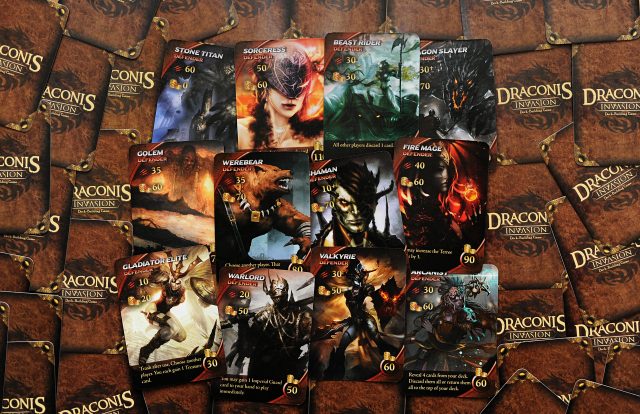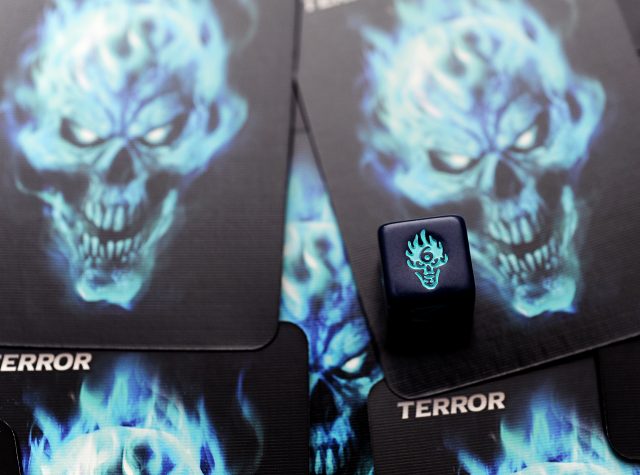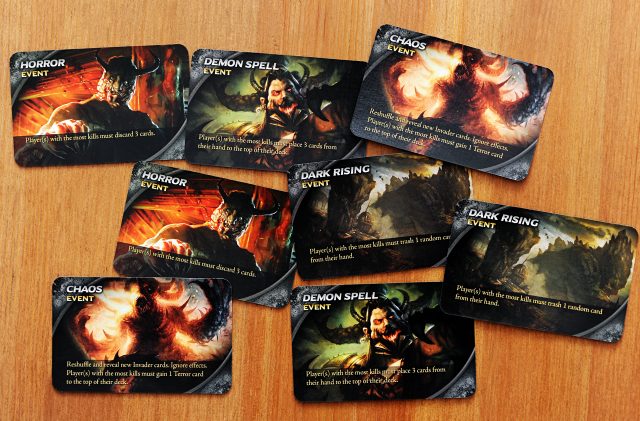Deckbuilding games are a dime a dozen. Heck, I just wrote about one last week and again last month, and yet a third time about a dungeon delving deckbuilder.
The ancestor of all the dungeony deckbuilders is probably Thunderstone, which came to market in 2009, not long after Grandpa Dominion. So if a publisher releases another roguelike shuffler, it needs to bring something fresh and new to the table. I mean, if you already own and enjoy Aeon’s End or Mage Tower, for example, why would you go out and buy another different game just like it?
 And so we come to Draconis Invasion, designed by Jonathan Lai and published this year by Keji Inc. What does it bring to the table?
And so we come to Draconis Invasion, designed by Jonathan Lai and published this year by Keji Inc. What does it bring to the table?
The components are superb: the artwork is great (if a bit dark-toned and hard to see) and the box comes with sturdy innards and handy dividers. The meat of the game will be very familiar to anyone who has played a deckbuilder before, but there are tweaks:
 buy a card, draw two campaign (ie bonus scoring) cards, defeat a beastie, or trash a card from your hand. After doing one of those things, you can put one excess coin card back on your deck for next turn. This means interesting decisions on every turn; on the downside, however, it means you rarely execute any cool multi-card combos, because there just isn’t time enough.
buy a card, draw two campaign (ie bonus scoring) cards, defeat a beastie, or trash a card from your hand. After doing one of those things, you can put one excess coin card back on your deck for next turn. This means interesting decisions on every turn; on the downside, however, it means you rarely execute any cool multi-card combos, because there just isn’t time enough.I think by now you can deduce what I think of the game, but I’ll make  it clear: Draconis Invasion makes an honest attempt to elbow its way into a very crowded field, but none of the changes it makes to gameplay radically alter the experience the way a game like Clank! does. Each of the design decisions has been well-implemented and well-explained, but the overall effect is still kind of bland, and often you feel like you’re fighting the game system instead of the game because you only really get to do one think on your turn, when you’re used to running chains of combos together.
it clear: Draconis Invasion makes an honest attempt to elbow its way into a very crowded field, but none of the changes it makes to gameplay radically alter the experience the way a game like Clank! does. Each of the design decisions has been well-implemented and well-explained, but the overall effect is still kind of bland, and often you feel like you’re fighting the game system instead of the game because you only really get to do one think on your turn, when you’re used to running chains of combos together.
Draconis Invasion is a perfectly fine game, but with so many new designs coming out every week, a game needs more than good-looking components and a sturdy set of rules to differentiate it from the pack.
Comments
No comments yet! Be the first!